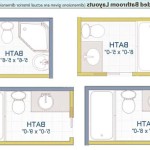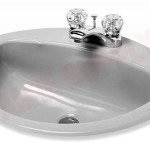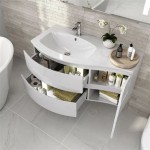Small Dark Bathroom Colors Ideas
The perception that small bathrooms should exclusively feature light and airy colors is a common misconception. While light colors can visually expand a space, darker hues can also be effectively employed to create a sophisticated, luxurious, and even surprisingly spacious feel, particularly in smaller bathrooms. The key lies in understanding how to utilize dark colors strategically, balancing them with contrasting elements, and maximizing available light.
Choosing the right dark color for a small bathroom involves careful consideration of the existing fixtures, lighting, and overall desired aesthetic. The impact of dark colors on perceived space is significant, therefore, thoughtful planning is paramount to achieve a successful design.
Understanding the Psychological Impact of Dark Colors
Dark colors, such as deep blues, charcoal grays, and rich browns, evoke different emotions and visual perceptions compared to their lighter counterparts. They tend to absorb light, creating a sense of intimacy and enclosure. This can be particularly appealing in a bathroom, transforming it into a cozy and relaxing sanctuary. However, the same light-absorbing properties can also make a small space feel even smaller if not properly mitigated.
The psychological effect of specific dark colors also plays a role. Dark blues, for example, can promote feelings of calmness and serenity, while deep greens can connect individuals to nature and create a sense of renewal. Charcoal grays offer a sophisticated and modern feel, while rich browns provide warmth and grounding. Understanding these nuances is crucial in selecting a color that aligns with the desired bathroom atmosphere.
Moreover, consider the impact of undertones within dark colors. A dark gray with cool undertones can feel stark and contemporary, while a dark gray with warm undertones can feel more inviting and comfortable. Similarly, a dark blue with green undertones can evoke a coastal atmosphere, while a dark blue with purple undertones can feel more luxurious and dramatic. Carefully evaluating these subtle variations ensures the chosen color complements the other elements within the bathroom.
Strategies for Incorporating Dark Colors in Small Bathrooms
Successfully integrating dark colors into a small bathroom requires a strategic approach that addresses the potential for creating a cramped or overwhelming space. Several techniques can be employed to counteract these effects and maximize the benefits of darker hues.
One effective strategy is to use dark colors selectively. Consider painting only one wall in a dark color, creating an accent wall that adds depth and visual interest without overwhelming the entire room. The remaining walls can be painted in a lighter, complementary color to reflect light and balance the overall aesthetic.
Another approach is to incorporate dark colors through accessories and fixtures. Dark vanities, mirrors with dark frames, and dark-colored towels can introduce depth and sophistication without committing to an entirely dark color scheme. This allows for a more flexible and less permanent way to experiment with darker hues.
Mirror placement is crucial in small bathrooms, especially when using dark colors. Strategically positioning mirrors can reflect light and create the illusion of more space. A large mirror above the vanity or a full-length mirror on a wall can significantly enhance the sense of openness.
Furthermore, ensure adequate lighting. Dark colors absorb light, so it is essential to incorporate multiple light sources to brighten the space. This can include overhead lighting, vanity lighting, and even accent lighting to highlight specific features. Opt for bright, energy-efficient bulbs that mimic natural daylight to maximize the impact of the lighting.
Consider contrasting textures and materials to break up the monotony of dark colors. Smooth, glossy tiles can reflect light and add a touch of elegance, while textured walls or accessories can create visual interest and depth. Combining different textures can prevent the space from feeling flat and one-dimensional.
Examples of Dark Color Palettes for Small Bathrooms
Several dark color palettes can be effectively used in small bathrooms to create a variety of different aesthetics.
A popular choice is a deep navy blue paired with white or cream accents. The navy blue provides a sense of sophistication and tranquility, while the white or cream accents add brightness and balance. This palette can be enhanced with brass or gold hardware for a touch of luxury.
Another option is a charcoal gray combined with lighter grays and whites. This creates a modern and minimalist look that is both stylish and versatile. Stainless steel or chrome fixtures complement this palette well, adding a sleek and contemporary feel.
For a warmer and more inviting feel, consider a rich brown or chocolate color paired with beige or ivory accents. This palette evokes a sense of comfort and relaxation, creating a spa-like atmosphere. Natural materials, such as wood and stone, can further enhance the warmth and texture of this color scheme.
A more daring option is to use a deep emerald green paired with black and gold accents. This creates a dramatic and luxurious look that is perfect for those who want to make a statement. Marble countertops and gold fixtures can elevate this palette to create a truly opulent space.
When selecting a color palette, it is important to consider the existing fixtures and features in the bathroom. For example, if the bathroom has white tile, a dark blue or gray wall color can create a striking contrast. If the bathroom has wood cabinets, a dark green or brown wall color can complement the natural tones of the wood.
In addition to the main wall color, consider the color of the trim, ceiling, and accessories. Light trim and ceilings can help to visually expand the space, while dark accessories can add depth and interest. The key is to create a balanced and cohesive design that reflects the desired aesthetic.
Ultimately, the best dark color palette for a small bathroom is the one that resonates with the user's personal taste and style. By carefully considering the psychological impact of different colors, employing strategic design techniques, and choosing a palette that complements the existing features, it is possible to create a small bathroom that is both stylish and functional.
Moreover, consider the finish of the paint used. Matte finishes tend to absorb more light, making the space feel smaller, while glossy or semi-gloss finishes reflect light, which can help to brighten the space. A semi-gloss finish is also more durable and easier to clean, making it a practical choice for bathrooms.
The size and shape of the room also influence the choice of color. A long, narrow bathroom can benefit from a dark accent wall at the end of the room to visually shorten the space. A small, square bathroom can benefit from painting the ceiling a lighter color to create the illusion of height.

25 Best Paint Colors For Small Bathrooms Making Maanita

22 Small Bathroom Colour Decor Ideas Dulux

10 Best Paint Colors For Small Bathroom With No Windows Decor Home Ideas

Timeless Small Dark Fabulous Bathroom Homemaking Without Fear
:strip_icc()/cdn.cliqueinc.com__cache__posts__244439__bathroom-paint-colors-244439-1543863705914-main.700x0c-3b46b353176c4fc094795ee6e8fdfd69.jpg?strip=all)
30 Bathroom Paint Colors Interior Designers Swear By
:max_bytes(150000):strip_icc()/chrissycoTraditionalModernDSC_6534-Edit-59d6dd18af5d3a0011cca048-5c5d000fc9e77c00010a481d.jpg?strip=all)
29 Black Bathrooms For An Ultra Chic Oasis

18 Bathroom Paint Colors Ideas Inspiration Benjamin Moore

99 Stylish Bathroom Design Ideas You Ll Love Small Dark Half Decor Contemporary Powder Room
:max_bytes(150000):strip_icc()/9337a3e31de33130ecad54e3371f15a2-583607415f9b58d5b1c803f2.jpg?strip=all)
32 Dynamic Black And White Bathroom Ideas

The 10 Best Dark Paint Colors Powder Room Design Bathroom Small Tiny Rooms







